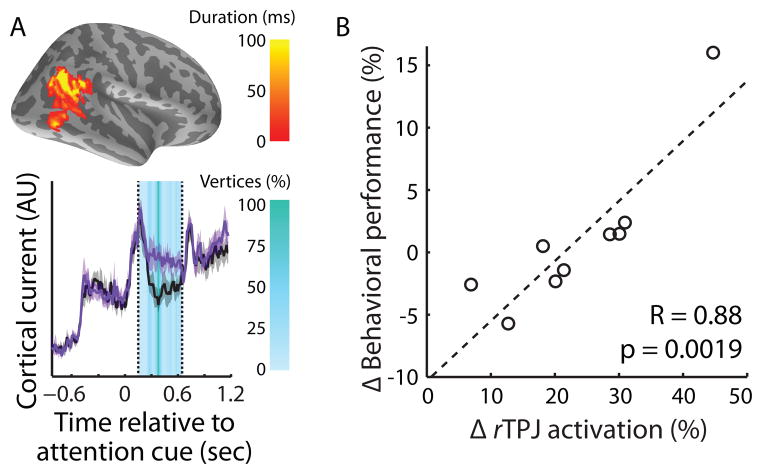Figure 4.
In one M/EEG experiment, the right temporoparietal junction (rTPJ) was significantly more active when subjects switched attention (purple trace) compared to when they maintained attention (black trace; reproduced from Larson et al., 2013). The duration of each vertex in the cluster is shown (A, top) alongside the time evolution of the neural activity (colored by the percentage of vertices in the cluster was significant; A, bottom). Differential activation in rTPJ was also correlated with behavioral performance differences in the task (B). These types of neural-behavioral correlations help establish the role of various regions in switching auditory spatial attention.

